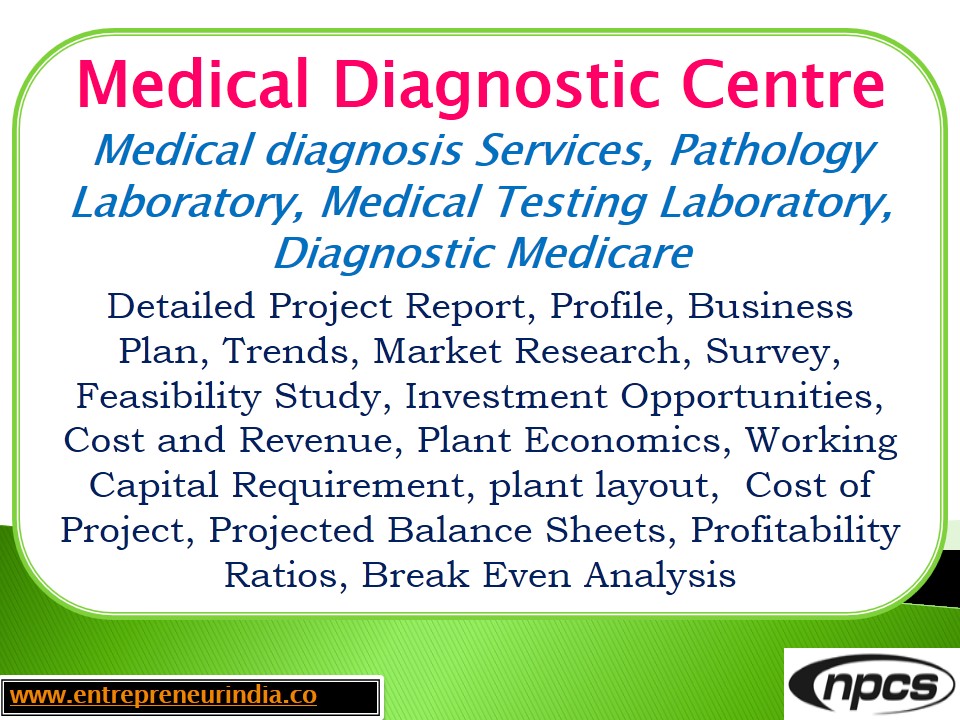
Diagnostic healthcare services have always played a crucial role in modern medicine. With the growing awareness about health and disease prevention, the demand for medical diagnostic centres has increased steadily. A well-equipped pathology lab is considered essential in both urban and semi-urban settings. Therefore, entrepreneurs aiming to enter the healthcare sector are being encouraged to consider diagnostic centre setup as a profitable and sustainable opportunity.
Market Demand and Scope
A significant rise in lifestyle-related diseases has been observed in the last decade. Consequently, the need for diagnostic services such as blood tests, radiology, and pathology has increased. Moreover, patients today prefer accurate and quick diagnosis. Thus, high-quality diagnostic centres have been sought by both hospitals and individual clients.
See Also – Rare Earth Metals Extraction
In India, a diagnostic industry growth rate of around 15% per annum has been recorded. Additionally, it is being estimated that over 70% of medical decisions depend on lab results. As a result, massive investments have been made in diagnostic facilities and advanced laboratory equipment.
Location and Infrastructure
For a pathology lab to function efficiently, a hygienic and accessible location must be selected. It is recommended that areas near hospitals, clinics, or residential zones should be preferred. The facility should be planned in accordance with health and safety guidelines.
Furthermore, a diagnostic centre has been expected to cover different sections such as sample collection, reception, waiting area, testing zones, and administrative offices. Proper ventilation, adequate space, and sanitation facilities must be ensured. If radiological tests such as X-rays or CT scans are planned, separate lead-lined rooms will be required.
Legal Permissions and Accreditation
Before operations begin, a number of legal approvals have to be obtained. Firstly, registration with the local health authority is mandated. Also, under the Clinical Establishments Act, diagnostic centres must comply with all health safety standards. A biomedical waste disposal agreement with an authorised agency must be signed.
Importantly, NABL (National Accreditation Board for Testing and Calibration Laboratories) accreditation is highly recommended. Although not compulsory, it boosts credibility and allows more tie-ups with hospitals and insurance providers. In some cases, approvals from the Atomic Energy Regulatory Board (AERB) might be required for radiology labs.
Equipment and Technology
To provide accurate and timely reports, high-quality instruments must be installed. Depending on the services offered, the following equipment is commonly purchased:
-
Hematology Analyzer
-
Biochemistry Analyzer
-
Centrifuges
-
Incubators
-
Microscopes
-
Electrolyte Analyzers
-
X-Ray and Sonography Machines (if applicable)
Moreover, digital systems for lab management and report generation are being adopted widely. With the use of Laboratory Information Management Systems (LIMS), efficiency can be improved significantly. Additionally, barcode-based sample tracking ensures zero errors during testing.
Staff and Manpower Requirements
Trained personnel are necessary for smooth functioning. It has been advised that pathologists, lab technicians, radiologists, and phlebotomists be employed. A qualified pathologist must supervise all operations. The supporting team must be well-trained in sample collection, testing procedures, and patient handling.
Customer care executives should also be employed to manage appointments, billing, and report delivery. Most importantly, continuous training programs must be conducted to maintain service standards and adapt to new technologies.
Services Offered by Diagnostic Centres
Although service variety depends on the scale of investment, most labs provide the following:
-
Clinical Pathology (Urine, Stool, Sputum tests)
-
Hematology (CBC, ESR, Clotting profiles)
-
Biochemistry (Liver function, Kidney function, Lipid profile)
-
Serology (HIV, HBsAg, Widal test)
-
Microbiology (Culture, Sensitivity, Smear tests)
-
Radiology (X-ray, CT scan, Ultrasound – optional)
In larger setups, additional services like ECG, TMT, ECHO, and MRI may also be added. Additionally, sample collection from home has become a value-added service to attract more clients.
Investment and Cost Estimation
A diagnostic centre’s setup cost varies based on its scale. However, an approximate cost structure is provided below:
| Expense Head | Estimated Cost (INR) |
|---|---|
| Premises Rent & Setup | ?5 – ?10 lakhs |
| Equipment Purchase | ?15 – ?30 lakhs |
| Furniture & Fixtures | ?2 – ?4 lakhs |
| Software & IT Systems | ?1 – ?2 lakhs |
| Licensing & Legal Formalities | ?1 – ?3 lakhs |
| Initial Staff Salaries | ?4 – ?6 lakhs |
| Marketing & Promotion | ?1 – ?3 lakhs |
| Total Estimated Cost | ?30 – ?60 lakhs |
It is worth noting that loans under MSME schemes can be availed for such projects. Additionally, assistance from health-focused NBFCs and private equity can be explored.
Revenue and Profitability
Since diagnostic tests are required on a routine basis, a consistent income stream can be expected. Tests have been billed individually or in packages. Tie-ups with hospitals, insurance companies, and doctors often result in a steady flow of patients.
Moreover, profits are maximized when operations are managed efficiently. Automation of processes, reduced human error, and optimized consumable usage contribute to cost-saving. Regular promotions and maintaining client satisfaction have been proven to increase referrals and walk-ins.
On average, a monthly revenue of ?4–?10 lakhs is being generated by mid-sized diagnostic centres. Net profit margins of 20–30% can be achieved with proper management.
Marketing and Promotion
To build visibility, a focused marketing plan should be followed. It is often suggested that promotions through doctors and clinics be prioritized. In addition, online visibility through SEO, social media, and health portals should be maintained.
Pamphlets, local newspaper ads, and community camps have also been used effectively. Offering first-visit discounts or free basic tests during festive seasons is also a popular approach to attract customers.
Word-of-mouth referrals are still among the most powerful tools in this sector. Hence, high service quality and quick turnaround time must be consistently maintained.
Challenges and Risk Management
Although the business potential is high, certain challenges have been faced by diagnostic centre owners:
-
Regulatory compliance must be ensured continuously
-
Equipment calibration and maintenance must not be ignored
-
Customer confidentiality must be protected under HIPAA or relevant local norms
-
Rising competition from chain labs can be seen as a threat
Despite these hurdles, risks can be mitigated with proactive planning, regular audits, and quality control. Long-term success depends heavily on operational excellence.
See Also – Food & RTE Retort Packing
Conclusion
In conclusion, a diagnostic centre and pathology lab can be established as a profitable and socially impactful business. Although heavy initial investments are required, the sector promises stable returns. With the healthcare industry expanding rapidly, diagnostic services will remain essential. By ensuring legal compliance, investing in modern equipment, and offering reliable service, long-term growth can be secured. Thus, entrepreneurs entering this domain are bound to benefit both financially and professionally.






